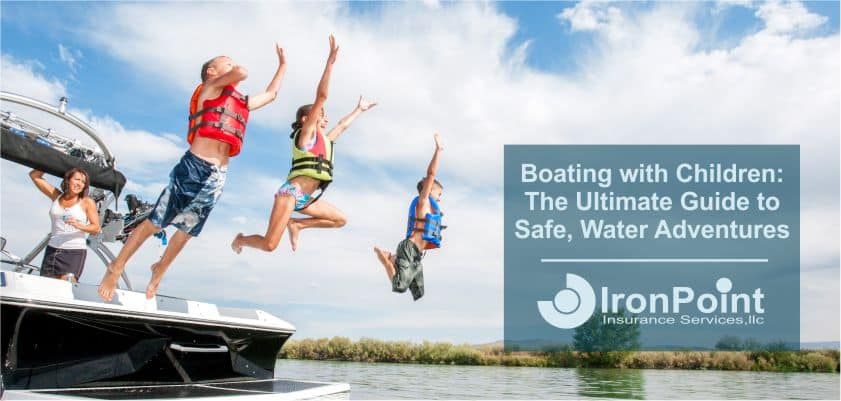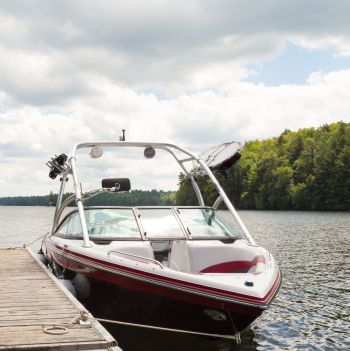Boating with Children: The Ultimate Guide to Safe, Unforgettable Water Adventures

Boating with children creates magic on the water. Pure and simple.
It transforms ordinary outings into lifetime memories. But here’s the catch—success doesn’t just happen. Planning does.
Those Instagram-worthy family voyages? The ones where everyone’s smiling instead of screaming? They demand more than just life jackets and sunscreen. Boating with children requires preparation, knowledge, and a dash of imagination—the stuff nobody mentions in boat showrooms.
Let’s navigate these waters together. Because nothing beats watching little ones develop sea legs under your watchful eye. Their wonder. Their delight. Their growing confidence.
These tips will transform your family’s maritime adventures. Let’s dive in.
Safety Essentials for Boating with Children
Here’s a truth seasoned parents know but rarely admit: the safest boating experiences are almost always the most enjoyable ones. Why? Because when safety becomes second nature, everyone relaxes into the adventure—including you. Let’s anchor down the essential safety practices for boating with children that nobody’s Facebook posts tell you about:
1. Life Jackets: The Non-Negotiable Foundation of Safety
The law requires kids under 13 to wear Coast Guard-approved life jackets—but smart boating families recognize this isn’t just about checking a regulatory box. It’s about selecting the right flotation partner for your child’s maritime journey.
The perfect child’s life jacket should:
- Hug their body snugly without restricting movement (unlike those hand-me-down jackets that fit like a potato sack)
- Feature bright colors that stand out against water and sky (think: could you spot this in a Where’s Waldo scene?)
- Include a sturdy grab handle for quick retrieval (because kids move like greased otters when wet)
- Provide head support for the youngest sailors (their heads are disproportionately large—science says so)
And please, that discount bin life vest might have saved you $20, but properly fitted, child-specific life jackets are worth every penny they cost. Consider it an investment in both peace of mind and boating enjoyment. The cheapest insurance you’ll ever buy.
2. Clear Communication Rules for On-Board Safety
Children thrive within clear boundaries, especially in new environments. Develop your family’s “Captain’s Code”—a set of consistent commands and expectations that transform potentially chaotic situations into orderly ones:
- “Docking positions!” (Everyone sits down, hands inside)
- “Slow zone!” (Indoor voices, mindful movement)
- “Weather watch!” (Everyone scans the horizon for changes)
- “All secure!” (Safe to move about freely)
Presenting these rules as special maritime knowledge rather than restrictions transforms compliance from a chore into a privilege. Your little ones aren’t just following rules—they’re learning to speak the secret language of experienced boaters.
For more helpful guidance, review these comprehensive boating safety tips before your next outing.
3. Sun and Weather Protection for Children on Boats
The harsh truth? The natural elements target kids with special intensity when boating with children. Their smaller bodies lose heat faster, dehydrate quicker, and burn more severely than adults in identical conditions. Mother Nature doesn’t offer kid discounts on UV damage.
Your environmental defense arsenal must include:
- Broad-spectrum SPF 50+ sunscreen applied before boarding and reapplied hourly (even on cloudy days—clouds are notorious liars about UV protection)
- UPF-rated clothing that covers shoulders, arms, and legs (fashion can heal, sunburns don’t)
- Securely fastened sun hats with neck protection (the kind they’ll hate in photos but thank you for later)
- Insulated water bottles filled with ice water (because warm water on hot days is about as appealing as warm soda)
- Shaded rest areas for cooling down (think of them as mandatory pit stops, not optional breaks)
Remember: a child complaining about being hot isn’t being difficult—they’re giving you vital information about a potentially dangerous situation developing.
Building Confidence and Skills When Boating with Children
Physical safety equipment provides the foundation, but psychological preparation builds the structure of a confident young boater. Successful boating with children means addressing both their physical and mental readiness for the water.
1. Teaching Children Emergency Response Scenarios
Children respond to emergencies based on what they’ve mentally practiced. Without creating fear, walk them through various scenarios:
“Let’s pretend you can’t see me on the boat for a moment. What would be your first action? That’s right—stay exactly where you are and call my name clearly.”
“If we hit a big wave and you end up in the water, your life jacket will keep you floating. Your job is to keep your legs together, arms out, and call for help while looking for the boat.”
Make these conversations matter-of-fact, even slightly playful, but consistent. Mental preparedness is the invisible life jacket that works when all else fails.
Many boaters ask, “Do I need boat insurance?” When rehearsing these scenarios with your children, the value of having backup protection becomes abundantly clear.
2. Preventing Boredom with Age-Appropriate Activities
Boredom on boats creates a dangerous domino effect: Restless children lead to distracted adults who miss critical safety cues. The solution isn’t more toys—it’s meaningful involvement. And no, “Go sit over there and be quiet” doesn’t count as meaningful involvement.
Transform young passengers into junior crew members with age-appropriate responsibilities:
- “Official Weather Watcher” (monitoring clouds and wind changes—kids are closer to the sky anyway, being shorter)
- “Navigation Assistant” (helping track the course on maps—finally, a practical use for those spatial reasoning skills)
- “Equipment Manager” (organizing and checking gear—channeling that natural tendency to touch everything)
- “Wildlife Spotter” (documenting animals sighted—because kids see EVERYTHING, especially when you’re trying to concentrate)
For quieter moments, pack:
- Waterproof field guides specific to your boating region (learning that doesn’t feel like learning)
- Marine-themed card games (ones you can stand to play more than twice)
- Water-safe binoculars with neck straps (the fastest way to turn complaining into fascination)
- Journal and waterproof markers for documenting adventures (future evidence of your parenting wins)
A child who feels purposeful is rarely a child who feels bored when boating with children. And a non-bored child is worth their weight in marine-grade stainless steel.
Teaching Water Environment Awareness to Children
Different waterways demand different knowledge when boating with children. Make learning about your specific boating environment a family project:
For ocean adventures, teach them about:
- How tides work and what tide tables mean
- What different wave patterns indicate
- How to identify safe swimming conditions
For lake excursions, focus on:
- Understanding underwater hazards
- Recognizing different types of boats and their patterns
- Weather changes unique to lake environments
For river journeys, emphasize:
- How water depth changes and what markers mean
- Why current strength varies in different parts of the river
- How to “read” water flow patterns
This isn’t just educational—it’s empowering. Children who understand their environment feel ownership over their safety and develop lifelong situational awareness.
Wondering about boat insurance coverage for different waterways? Each environment presents unique risks that the right policy can address.
Boat Insurance: Essential Protection for Family Boating
You’ve thought of everything: the best life jackets, weather-appropriate clothing, first-aid kits, and communication devices. But what about when despite all precautions, the unexpected occurs? Because Murphy’s Law loves family outings on the water. It’s practically an invited guest.
Boat insurance serves as your family’s ultimate backup plan. Comprehensive coverage includes protection that family boaters need:
- Medical payment coverage for unexpected injuries (because Band-Aids don’t fix everything)
- Emergency assistance when mechanical problems strand you (and they will, usually at the farthest point from shore)
- Liability protection if another vessel or swimmer is involved in an accident (because other boaters aren’t always as careful as you are)
Many casual boaters wonder if insurance is really necessary. The answer becomes crystal clear when boating with children. Your most precious cargo deserves comprehensive protection—unless you enjoy lying awake at night wondering “what if?”
Before your next family maritime adventure, review both your safety plan and insurance coverage. The five minutes spent could protect memories yet to be made.
Creating Lifetime Boaters: The Benefits Beyond Today
Success in boating with children isn’t measured by just surviving the day without anyone falling overboard. It’s about planting seeds for a lifetime love of water adventures—seeds that grow into confident adults who don’t white-knuckle the railings at the mere sight of waves.
Children who balance caution with adventure on the water gain more than just boating skills. They develop confidence that carries into everyday life. The kind of confidence that makes teachers write those rare positive notes home.
Every safety habit you teach today becomes tomorrow’s instinct:
- A properly fastened life jacket now = automatic safety checks later (in boats and in life)
- Weather awareness now = natural situational awareness later (which works everywhere from boardrooms to blind dates)
- Following the “Captain’s Code” now = respect for necessary rules later (without the eye-rolling)
Ready to Create Safe Boating Memories with Your Family?
Before you cast off for your next family adventure, make sure you have the right protection in place. Proper boat insurance isn’t just about protecting your vessel—it’s about safeguarding those precious moments with your children on the water. Because fixing fiberglass is expensive, but missing memories is costly in ways no currency can measure.
Start the conversation online today, or get a personalized quote to ensure your family’s boating adventures are protected for years to come. Because when it comes to boating with children, peace of mind is the greatest luxury of all—more valuable than that fancy fish finder you’ve been eyeing.

Get a Boat Insurance Quote
Let us compare boat insurance quotes for you. We make it fast, safe, and secure.
- Let’s Get Started!
-
Have an Agent Call
- Compare Business Quotes
-
Business Owners’ Policy
-
Workers’ Compensation
-
General Liability
-
Commercial Auto
-
Cyber Liability
- Personal Insurance
-
Auto
-
Home / Condo / Renters
-
Motorcycle
-
Classic Car
-
Boat / Yacht
- Quote & Buy Online
-
Small Business Insurance
-
Mexico Auto Insurance
-
Pet Insurance
Call 1-877-334-7646 to speak with an insurance specialist.
Key Takeaways:
- Mandatory for all boaters: as of 2025, every motorized vessel operator in California must carry a Boater Card—no exceptions.
- Simple and affordable: the lifetime card costs $10 and can be earned online through approved safety courses.
- Safety and compliance matter: boating without the card risks fines and may affect your insurance coverage after an accident.